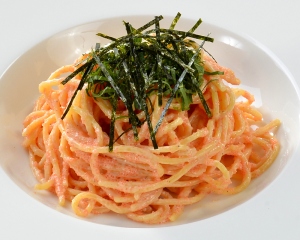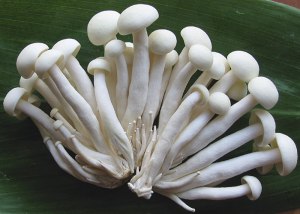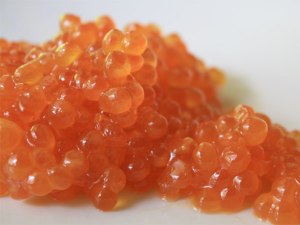Wafu pasta ( Japanese style Pasta) is the greatest example of a fusion food culture in the world, which is an amazing pasta combination of Japanese ingredients with western food habits, especially pasta.It became famous among the Japanese these days although it was available in the market long before. It all began with a food experiment during the western occupation in Japan in 1950s, when the people began to use the Japanese ingredients to make pasta instead of traditional pasta ingredients.
There are various types of Japanese ingredients used to make Wafu pasta which provides a completely unique taste to the pasta lovers. Kobashi Tokyo Pasta in Bangkok provides the best wafu pasta in Thailand and which is expanding its branches to different locations in Bangkok. People who are wish to experience the Japanese Italian fusion food should definitely visit kobashi Tokyo pasta and I am sure you gonna love it.
- Salmon fish Steak
- Peperoncino
- Pizza Mentaiko-Mayo
- Miso Salmon-Broccoli
- Peperoncino
- wafu Pasta
- Past Tuna Mayo
There are many unique Japanese ingredients used to make wafu pasta at Kobashi Tokyo Pasta,however I have only list only some of the key ingredients used. All these ingredients will be different in each pasta dishes depending upon the requirements.
Mizuna (Japanese mustard)
Kobashi Tokyo pasta uses the genuine Japanese ingredients to make the so called wafu pasta (Japanese Style Pasta) which may not be found in other pasta or Japanese food combinations. It is completely indigenous to Japanese people and this Green Mustard has both a long growing season and a high tolerance for cold weather, making it easy to grow. Mizuna is not only eaten raw in Japan but also may be pickled, stir-fried, simmered, or added to hot pot dishes. With its crisp stalks and beautiful frond-like leaf, Mizuna is a wonderful and tasty addition to any salad.
Most of the traditional wafu pastas are made of this ingredient to give the real taste of Japanese pasta.
Mentaiko
It is Made by seasoning fresh Pollack (A special species of fish), or cod roe, in a salty brine producing a pink, creamy sauce. A premium olive oil balances the taste of the Mentaiko while the Shiso adds a note of herbs as a contrast to the essence of the sea, all together creating a rich, flavorful topping for any hot pasta. It is the marinated roe of pollock, and cod including is a common ingredient in Japanese cuisine.
Onsen Tamago
Onsen Egg is a traditional Japanese boiled egg, originally slow cooked in the water of Onsen hot springs in Japan. A unique texture where the egg white tastes like delicate custard (milky and soft) is achieved by using different temperatures during the cooking process to solidify the egg yolk and egg white. Simple and delicious served with either broth or soy sauce.
Parmesan Cheese
Parmigiano-Reggiano called Parmesan in English after the name for it is a hard, granular cheese cooked but not pressed, named after the producing areas near Parma, Reggio Emilia, Modena, and Bologna , and Mantova in Italy. Parmigiano-Reggiano Vecchio is aged for 18–24 months and is made from raw cow’s milk. It is usually the cheese to go with Spaghetti and other typical Italian pasta, but it also has many other uses. The original Parmesan cheese is one of the most expensive cheeses in the world. It is commonly grated over pasta dishes, stirred into soups and risottos, and eaten on its own. It is often shaved or grated over other dishes.
Homemade Rayu
This Homemade Japanese Chili Oil (Rayu) is made by poaching chili and garlic in a variety of oils adds depth and a mild spicy aroma to the dishes. It is commonly used in Chinese cuisine, East and Southeast Asia and elsewhere particularly popular in Sichuan cuisine, it is used as an ingredient in cooked dishes as well as a condiment. It is sometimes used as a dipping sauce for meat and dim sum. Chili oil is typically red in color is made from vegetable oil, often soybean oil or sesame oil, although olive oil or other oils may be used.
Daikon Radishes
A refreshing daikon salad utilizes the radish’s sweetness, bitterness, and crisp texture. Daikon is rich in fiber and vitamin C and contains an abundance of amylase, an enzyme that helps in the breakdown of starch Although there are many varieties of daikon, the most common in Japan, the aokubi-daikon, has the shape of a giant carrot, approximately 20 to 35 cm (8 to 14 in) long and 5 to 10 cm (2 to 4 in) in diameter.
One of the most unusually shaped varieties of daikon cultivated in Kagoshima Prefecture is the turnip-shaped sakurajima daikon, which often grows as large as 50 cm (20 in) in diameter and weighs as much as 45 kg. The flavor is generally rather mild compared to smaller radishes. East Asian radish with a wide variety of culinary uses. Daikon is also frequently used grated and mixed intoponzu, a soy sauce and citrus juice condiment.
Shimeji Mashroom
It is a group of edible mushrooms native to East Asia, but also found in Northern Europe. Shimeji should always be cooked: it is not a good mushroom to serve raw due to a somewhat bitter taste, but the bitterness disappears completely upon cooking. The cooked mushroom has a pleasant, firm, slightly crunchy texture and a slightly nutty flavor. Cooking also makes this mushroom easier to digest. It can be used in soups, stews and in sauces.
Salmon Roe
Salmon is the fully ripe internal egg masses in the ovaries, or the released external egg masses of salmon fish. It is used both as a cooked ingredient in many dishes and as a raw ingredient in the wafu pasta (Japanese style Pasta) at Kobashi restaurant.
Kobashi Tokyo Pasta at Bangkok, Thailand provides the best Wafu pasta in the country without loosing the original taste they can experience in Japan and other Western countries. Kobashi offers different dishes that can satisfy the desire to experience the real fusion of Japanese Western fusion food since Thailand also has the tradition of fusion food culture throughout its history.
















